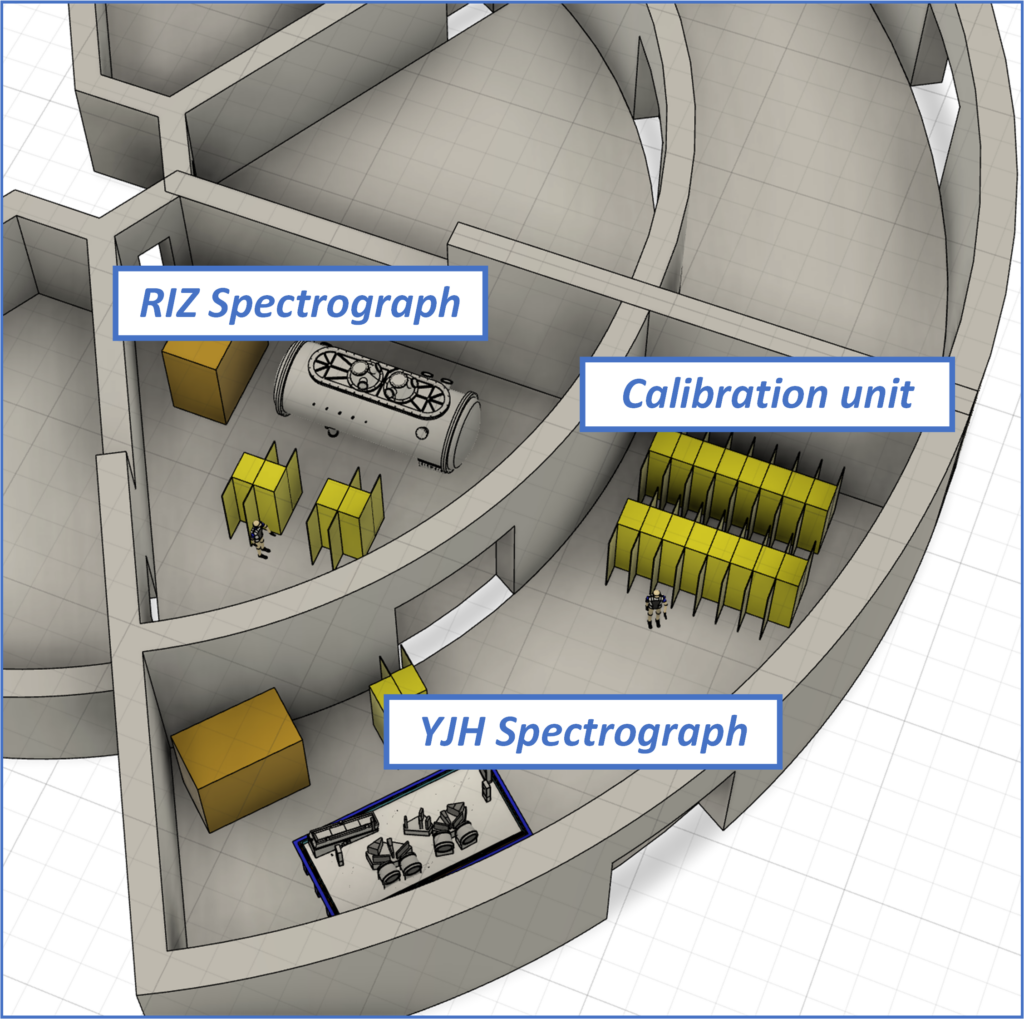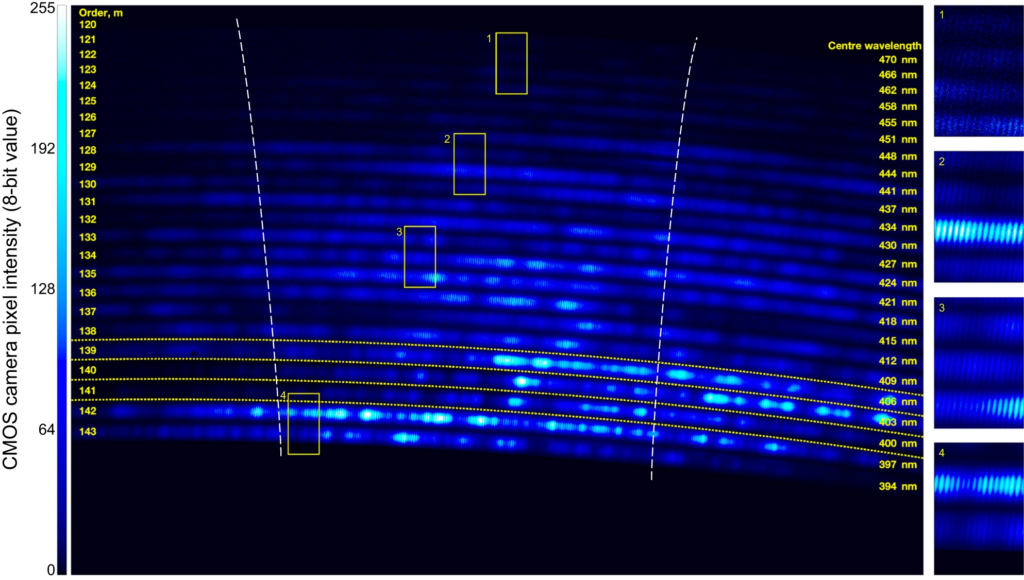Calibration Unit
To enable some of the science cases of the ANDES-spectrograph extremely high precision and accuracy of the wavelength solution over a long period of time is required with a goal of being able to detect spectral shifts of 67 parts per trillion over a period of 10 years.
Even though the ANDES-spectrograph is designed for maximum intrinsic stability, a calibration unit is necessary to achieve these specifications. The calibration unit allows to inject light sources with a well defined, known spectrum into the spectrographs to detect minute shifts of the spectrum on the detector. To allow for maximum flexibility and modularity the calibration unit is physically split into three calibration units, one for each spectrograph, all of which will be located in the Coudè room.

A number of different calibration light sources, such as halogen lamps, hollow cathode lamps, Fabry-Perot etalons and an astrocomb, as well as an internal reference system (a second spectrograph based on interferometric techniques), will be used to achieve this high measurement precision and accuracy. One of the most crucial is the astrocomb, a laser frequency comb optimized for the calibration of astronomical spectrographs. Laser frequency combs that are referenced to atomic frequency standards provide a spectrum resembling a comb of equally spaced lines, each of which is known to extreme accuracy and precision. To make use of this as an astronomical calibration light source however, several challenges must be overcome, for example extending the wavelength range to reach the blue arm of the spectrograph, which was successfully demonstrated by the Herriot-Watt group.

To distribute the light from the different calibration light sources to the different outputs, i.e. sending light through the simultaneous calibration fiber as well as the front ends to the spectrographs a light distribution point is being developed. This is a modular system enables the splitting and combining of different light sources to enable all required combinations of in-
and outputs with a high repeatability and a fast switching time using pneumatic pistons.